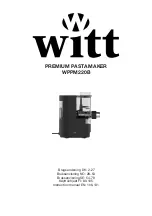
5
1
O’Neil Programming Language Reference Manual
Introduction
The O'Neil Quick Reference Programmer's Guide is a reference guide for O'Neil printers. This
programming guide documents the functions and features of the printer's programming
language.
Overview of Printing Modes
O'Neil thermal printers support several different printing protocols. The two native protocols
are Line Printer and Easy Print. Each of these protocols have their own unique advantages
depending upon what is to be printed. It is also possible to mix Line Printer and Easy Print in
a single printed image. In addition to these two modes, there are also several emulation
modes. These emulation protocols are covered in separate documents.
Line Printer Mode
The Line Printer mode is the simplest method of printing. Each line to be printed is sent to
the printer as a sequence of single bytes (some Asian character sets require two bytes for
each character). The printer accepts characters and begins to print when a Carriage Return
(0x0D) or Line Feed (0x0A) is received. Then all characters received to that point are printed
on a single line. A series of ESCape code sequences can be sent to the printer to alter the
look of the characters (e.g. to make them double wide, or to change the font, or to change
other aspects of the appearance of the printout). You can also have the printer re-align if you
are using stocks with a "Q" or alignment mark.
Easy Print Mode
The Easy Print mode is a much more powerful method of printing. Easy print is actually a
printing protocol that lets you give commands to the printer (such as PRINT). Within that
protocol, you can tell the printer how to print that data (e.g. using a variety of fonts, or as a
bar code), exactly where to put the data (anywhere on the printed image down to .005"),
and how to modify the data (e.g. tall, wide, rotated). And you can store graphics images
such as logos or icons to be used anywhere on the printed image. If you are printing on pre-
cut labels, you can use a pre-printed "Q" mark or the gap between labels to re-align after
each image is printed.
Note:
The commands documented in this programmer's guide are available
depending upon which version of firmware is installed on your printer and which
printer you are using. To determine which version of the firmware you are
using, print a self-test. The self-test printout lists information about your
printer's configuration, options, etc.
Summary of Contents for microFlash2
Page 3: ......







































